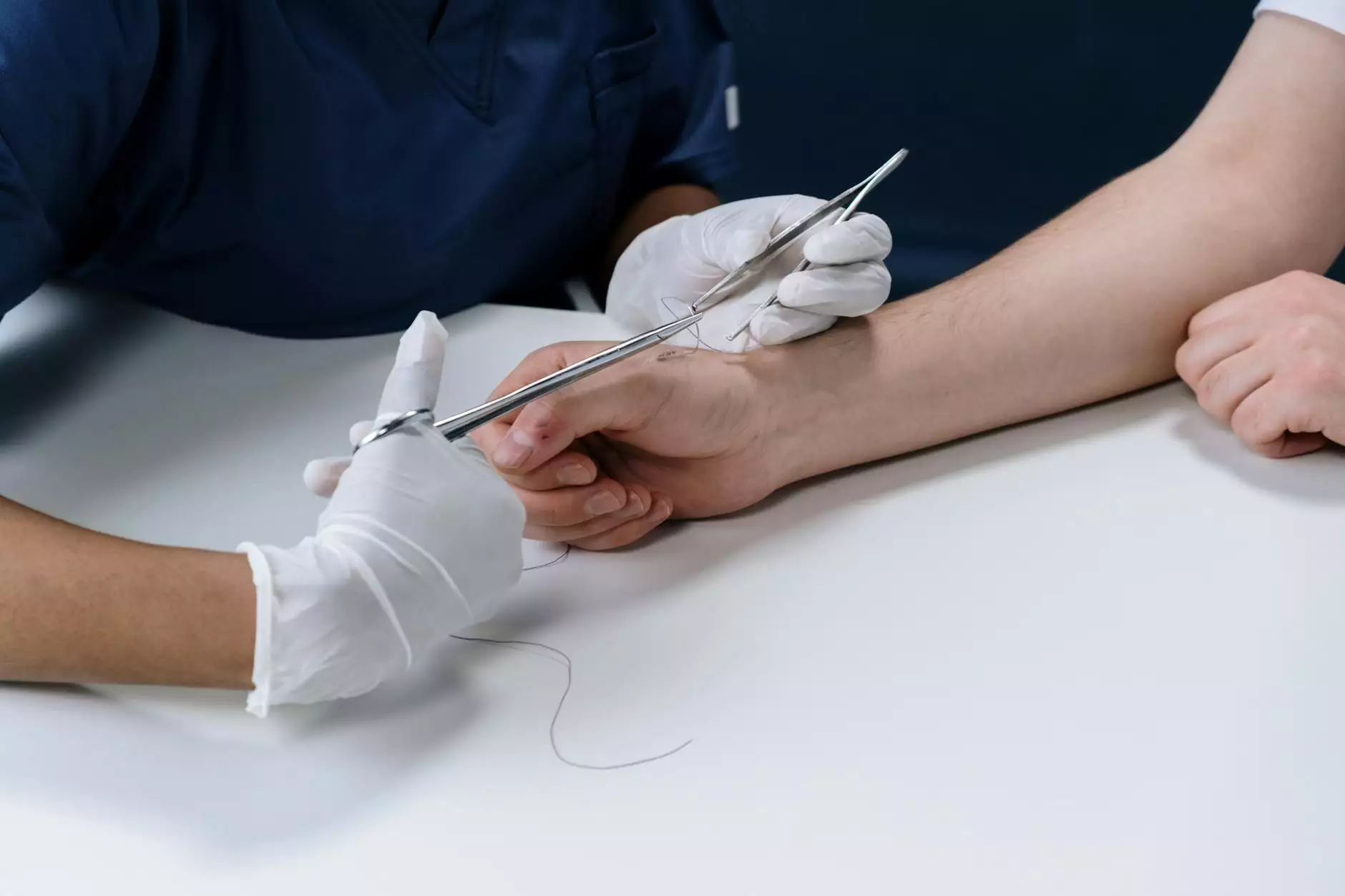Understanding Tendinitis and Tenosynovitis: Key Insights for Better Health

Tendinitis and tenosynovitis are common yet often misunderstood medical conditions that can significantly impact quality of life. Whether you're an athlete, a professional, or simply someone who engages in regular activities, understanding these conditions is crucial for effective management and prevention. This comprehensive article delves into the definitions, symptoms, treatment options, and preventive measures related to tendinitis tenosynovitis.
What is Tendinitis?
Tendinitis refers to the inflammation of a tendon, which is the fibrous tissue that connects muscle to bone. This condition can occur in various parts of the body, commonly affecting the shoulders, elbows, wrists, knees, and heels. The inflammation may stem from acute injury, repetitive motion, or chronic overuse, leading to symptoms such as:
- Pain: Often described as a dull ache, the pain typically worsens with activity.
- Stiffness: Affected areas may feel stiff, particularly after periods of inactivity.
- Swelling: There may be visible swelling or tenderness surrounding the inflamed tendon.
- Restricted movement: Individuals might find it difficult to perform routine movements without discomfort.
What is Tenosynovitis?
On the other hand, tenosynovitis is the inflammation of the tendon sheath, which encases the tendon. This condition is often seen in conjunction with tendinitis and can occur in various parts of the body, particularly the hands and feet. Symptoms of tenosynovitis include:
- Pain: Intense pain, especially when moving the affected joint.
- Swelling: Swelling along the length of the tendon sheath may occur.
- Difficulty moving: There could be a noticeable loss of mobility in affected joints.
- Crepitus: A crackling sound may be heard when the affected area is moved.
Causes and Risk Factors
Both tendinitis and tenosynovitis can be attributed to various factors, including:
- Repetitive Activities: Jobs or hobbies involving repetitive motions are a significant risk factor.
- Aging: As we age, tendons become less flexible and more prone to injury.
- Improper Technique: In sports, poor technique can lead to increased stress on tendons.
- Medical Conditions: Conditions such as diabetes and rheumatoid arthritis may predispose individuals to these conditions.
Diagnosis of Tendinitis and Tenosynovitis
Proper diagnosis is critical for effective management of both conditions. Healthcare professionals, including chiropractors and physical therapists, may utilize the following methods for diagnosis:
- Physical Examination: An initial assessment involves checking for swelling, tenderness, and range of motion.
- Imaging Tests: X-rays, MRIs, or ultrasounds may be performed to visualize the extent of the inflammation and rule out other injuries.
- Patient History: A comprehensive history of symptoms, activities, and overall health is essential for understanding the condition.
Treatment Options for Tendinitis and Tenosynovitis
Addressing tendinitis and tenosynovitis typically involves a multi-faceted approach. Treatment strategies may include:
1. Rest and Activity Modification
Taking a break from activities that exacerbate symptoms is critical. Modifying tasks or substituting less-intense activities can help in recovery.
2. Ice Therapy
Applying ice to the affected area for 15-20 minutes can reduce swelling and alleviate pain. It’s especially effective within the first 48 hours post-injury.
3. Compression and Elevation
Using compression wraps and elevating the injured area can help manage swelling and provide support to the affected tendon or sheath.
4. Physical Therapy
Engaging in physical therapy is one of the most effective ways to treat tendinitis and tenosynovitis. Physical therapists employ various techniques, including:
- Stretching and strengthening exercises to improve flexibility and support.
- Manual therapy to reduce pain and promote healing.
- Education on proper body mechanics to prevent future injuries.
5. Medications
Non-steroidal anti-inflammatory drugs (NSAIDs) are commonly used to manage pain and reduce inflammation. In some cases, corticosteroid injections may be recommended for more severe inflammation.
6. Surgery
In cases where conservative treatments fail, surgical options may be explored to repair or clean the affected tendons or sheaths.
Preventive Measures
Preventing tendinitis and tenosynovitis involves lifestyle adjustments and proper techniques in physical activities. Here are key preventive strategies:
- Warm-Up and Cool Down: Always incorporate warm-up exercises before activities and cool down afterward to maintain flexibility.
- Strength Training: Strengthening surrounding muscles can help provide better support to tendons and reduce strain.
- Ergonomics: Ensure that work environments are ergonomically sound to reduce repetitive strain injuries.
- Listen to Your Body: Don’t ignore persistent pain. Early intervention can prevent more severe issues.
Conclusion
In conclusion, understanding tendinitis and tenosynovitis is essential for anyone wishing to maintain optimal health and prevent future injuries. Recognizing symptoms early and seeking appropriate treatment can lead to successful recovery and a return to normal activities. Integrating preventive strategies, including physical therapy, proper ergonomics, and regular exercise, can further enhance your ability to stay active and free from pain.
For personalized guidance, consider consulting with health professionals at IAOM-US, where experts in Chiropractors and Physical Therapy can provide tailored treatment plans to address your specific needs and ensure effective recovery.



